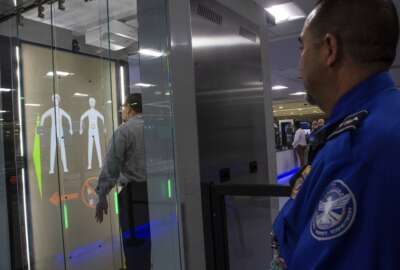The Importance of Customer Experience
If we can be faster and more nimble and use contemporary technologies and architectures, I think government organizations can do a much better job of conducting programs and projects successfully, of making good use of taxpayer money and other public resources.
Mark Schwartz
AWS Enterprise Strategist, Amazon Web Services
I think the most important thing for me is to focus on mission. It's easy when you're thinking about the cloud and DevOps and stuff like that to get all caught up in spreadsheets with the cost of each instance and that sort of thing. Now, the question is, how are you going to be able to accomplish your mission better?
Mark Schwartz
AWS Enterprise Strategist, Amazon Web Services
Congress and the Biden administration put their money where their mouths are by allocating $150 million for the federal citizen services fund. The General Services Administration, which runs the fund, allocated money for 14 citizen facing digital services projects. These range from assisting families eligible for the child tax credit to streamlining identity verification to bridging the gaps in Wi-Fi access.
These projects are just some of the ways agencies have shifted their efforts over the last few years.
While the concept of being more citizen centric may have started back in 2002 under the old e-government projects, the idea has reached new heights between the pandemic, the acceptance of cloud and the DevSecOps approach to development and the maturation of user experience and user design principles.
To continue to make improvements, agencies need the right technology and the appropriate training to ensure citizens continue to have a positive experience with the government.
And of course, the technology that underlies all of these efforts must be available, agile and secure.
Mark Schwartz, an enterprise strategist at Amazon Web Services, said public and private sector organizations like are responding to the pace of change, which between the pandemic, cloud services and the similar technologies has increased over the last few years.
“As these things change, organizations have to be able to respond to those change quickly enough to seize opportunities and quickly enough to avoid pitfalls It’s a general trend across the whole economy,” Schwartz said during the discussion IT Modernization for Citizen Services. “If we can be faster and more nimble and use contemporary technologies and architectures, I think government organizations can do a much better job of conducting programs and projects successfully, of making good use of taxpayer money and other public resources.”
Too often organizations, both in the public and private sectors, are held back by their older or legacy technology because these systems were not designed to be nimble or agile as requirements change. This is why the move to the cloud, both something that has been in the works for more than a decade and the acceleration brought on by the pandemic, is giving agencies a once-in-a-lifetime opportunity to create future-proof architectures.
Schwartz said the IT modernization efforts must address both the technology and process sides as well as the people side.
“The big change, in my opinion, really is that [the workforce] have to get used to thinking in terms of small increments, iterative change with small changes, and that’s very risk mitigating. When you think about it, instead of committing to a really big initiative with a big budget that’s not going to deliver results for many years, you can deliver actual results really quickly, and then incrementally add to those,” he said. “The reason why this is a hard cultural shift is it implies that because your risk is lower and because you’re moving quickly, you shouldn’t do a really complex, heavyweight oversight process to make decisions. You make provisional decisions and you change them downstream, rather than what we had to do at the Homeland Security Department with 87 documents and go through 11 gate reviews and have 22 people in different oversight roles. It’s not necessary when you’re committing small amounts of money and working incrementally with results all along the way. So that’s the big change.”
Schwartz added it’s also to get middle management to support the change and engage in it, which becomes a way to institutionalize the iterative approach.
“The key, I think, is changing incentives of those people, and I don’t mean financial incentives because in the government we can’t really do that. It’s changing the role definition, changing their understanding of how they contribute to mission, things like that,” he said. “For example, if the quality assurance organization thinks of itself in terms of swooping in at the end of a project and saying, ‘oh, no, the quality is not good enough,’ that’s not going to support these new ways of changing. But instead, if they think of their job as being part of the process throughout and making sure everything is produced at a high level of quality that fits beautifully into the digital way of working. It’s just a matter of changing their understanding of what their role is.”
The culture change also includes contractors. When Schwartz was the chief information officer at the U.S. Citizenship and Immigration Service (USCIS), he pushed contractors to work together, provided constant feedback to improve their performance and enable them to react quickly to problems.
He said CIOs and other technology leaders have to figure out how to break the “status quo bias.”
“I think the most important thing for me is to focus on mission. It’s easy when you’re thinking about the cloud and DevOps and stuff like that to get all caught up in spreadsheets with the cost of each instance and that sort of thing. Now, the question is, how are you going to be able to accomplish your mission better? By being able to move more quickly by having the right tools at your disposal, and then you work backwards from that to build your business case and to determine how you actually execute once you start moving,” Schwartz said. “Once you realize that you’re getting positive results all along the way, then that that discomfort starts to go away. But I’ve always found that to be the biggest impediment.”
Listen to the full show:
Copyright
© 2024 Federal News Network. All rights reserved. This website is not intended for users located within the European Economic Area.








